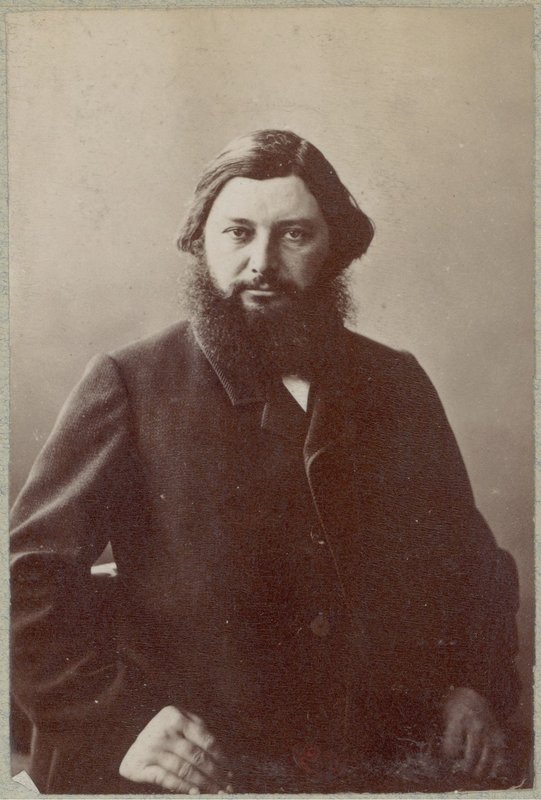
1819–1877
Movements
Occupations
Jean Désiré Gustave Courbet (1819-1877) was a French painter who revolutionized 19th-century art as the founding figure of the Realism movement. Born in Ornans, a small town in the Doubs region of France, Courbet came from a prosperous farming family with anti-monarchical roots—his maternal grandfather had participated in the French Revolution. This background shaped his lifelong commitment to depicting ordinary people with dignity and his rejection of academic pretension. Courbet's artistic significance lies in his radical insistence on painting "only what he could see," breaking decisively with both Romantic idealization and Neoclassical conventions. He challenged the academic hierarchy by rendering peasants, laborers, and everyday scenes on monumental scales traditionally reserved for religious or historical subjects. His breakthrough came after the 1848 Revolution with masterworks like After Dinner at Ornans (1849), The Stone Breakers (1849), and A Burial at Ornans (1849-50). These paintings shocked critics by depicting humble provincial life with unflinching honesty and on canvases of heroic proportions. Throughout his career, Courbet developed from a student copying Spanish masters like Velázquez at the Louvre to an innovative painter working across multiple genres. The Painter's Studio (1855) exemplified his mature vision as a complex allegory depicting influences from all social classes. His later seascapes, including The Cliff at Étretat after the Storm (1870), demonstrated mastery of light and atmosphere that directly influenced the Impressionists. He also created controversial works, including erotic paintings like L'Origine du monde (1866), which remained hidden until 1988. Courbet's style was deliberately bold and unrefined by academic standards. He abandoned careful modeling in favor of applying paint thickly with broken flecks, slabs, and palette knife techniques that emphasized the physical density, weight, and texture of his subjects. Critics compared his detailed surfaces to contemporary daguerreotypes, while his dark tones and thick impasto created powerful material presence. These innovations made him greatly admired by later modernists who valued liberated compositions and amplified surface texture. His political involvement with the 1871 Paris Commune led to imprisonment and financial ruin. Convicted for his role in proposing demolition of the Vendôme Column, Courbet faced a 323,000-franc reconstruction bill. Unable to pay, he fled to Switzerland in 1873, where he spent his final years painting landscapes and fish studies before dying of liver disease in 1877. Courbet's legacy profoundly shaped modern art. Cubist theorist Guillaume Apollinaire declared him "the father of the new painters," while his influence touched Cézanne, Manet, Monet, Whistler, and countless others. By rejecting established norms and insisting on physical reality over idealization, Courbet laid the groundwork for Impressionism, modernism, and the liberated approaches that defined 20th-century art.
Wikidata/Wikimedia Commons